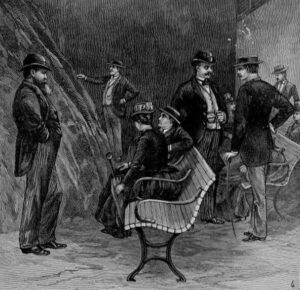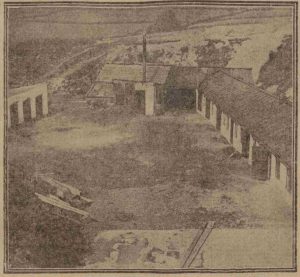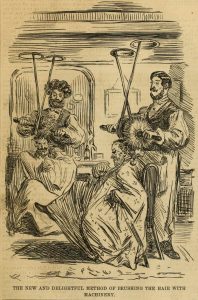Kimball’s Anti-Rheumatic Ring fits into the tradition of the magnetic or copper jewellery that many people still swear by for arthritis and general health.
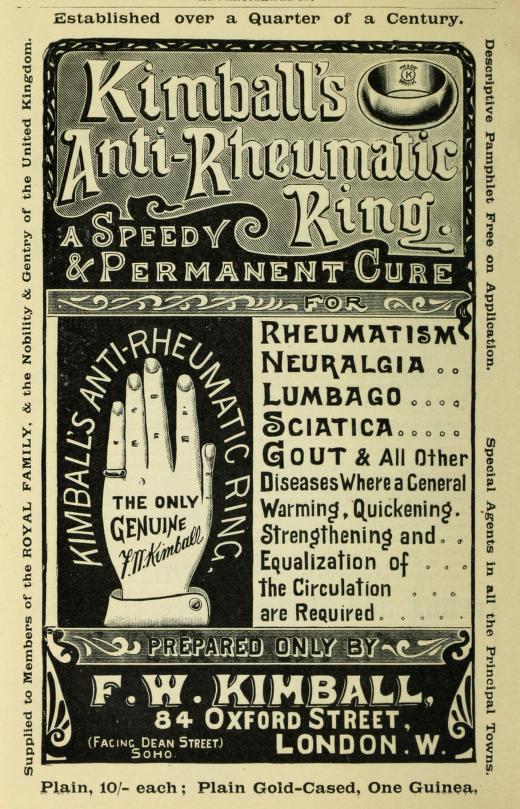
Frederick W Kimball (b.1854) introduced it in about 1883 in Boston, MA, advertising it as ‘The Great German Anti-Rheumatic Ring’. By 1890, the company had moved to State Street, Chicago, and by 1892 it was based in Union Square, New York City. Sarah Foster Kimball, Frederick’s wife, appears to have the been the main proprietor in the early 20th century. The Anti-Rheumatic Ring cost $2 and adverts promised that it would help:
RHEUMATISM, NEURALGIA, SCIATICA, LUMBAGO, GOUT, PARALYSIS and, in fact, ALL DISEASES where a WARMING, QUICKENING, STRENGTHENING AND EQUALIZATION of the circulation is required.
It cures by quickening the circulation, then the blood, coursing more quickly through the veins, dissolves the ACID CRYSTALS, which are the direct cause of pain in RHEUMATISM. It makes no difference in what part of the body the trouble may be. (The Boston Globe, 11 March 1888).
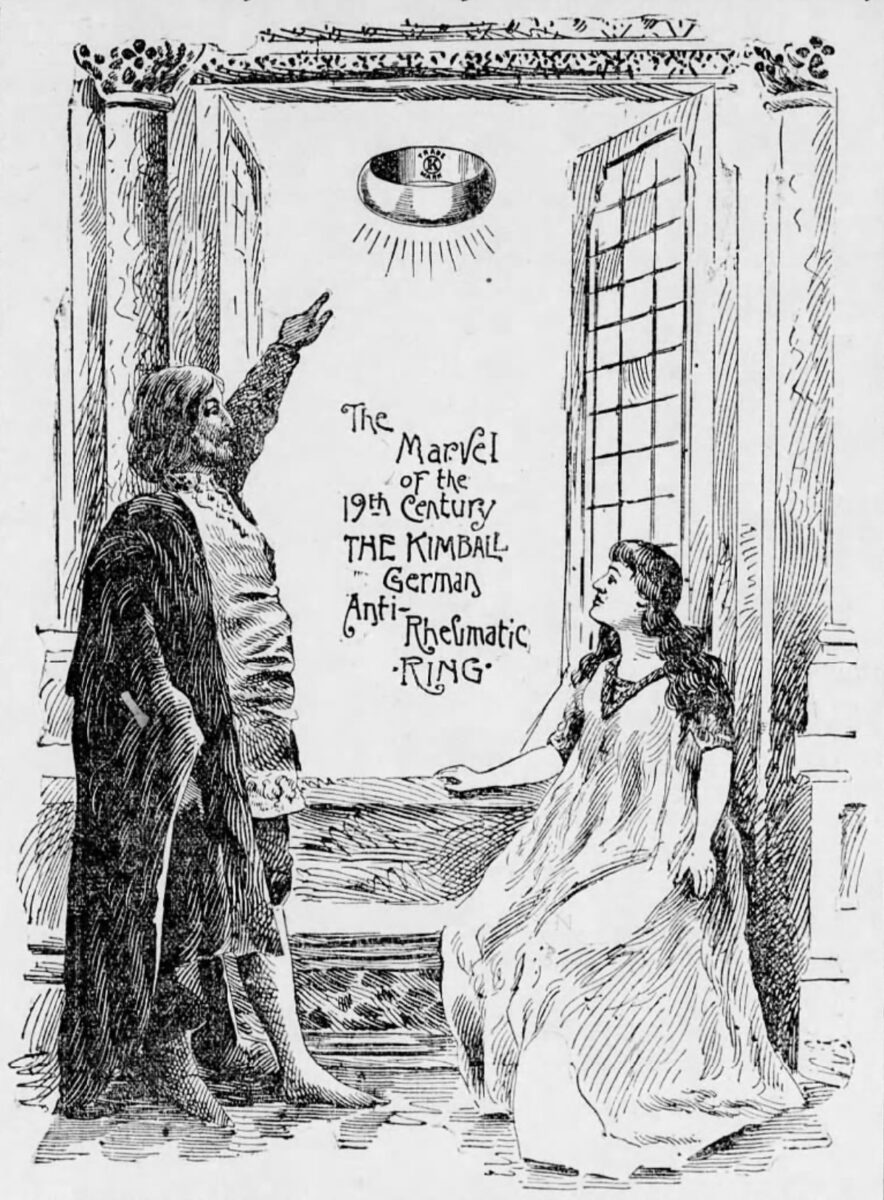
The theory behind the device held that rheumatism resulted from acidity of the blood. This could be the consequence of liver, kidney or stomach disorders, and everyone had it to a greater or lesser extent. The acid would crystallise into glass-like particles that irritated the nerves, causing pain. A British branch of the company operated from 84 Oxford Street, London, selling the rings for 10 shillings. One of their advertising pamphlets from the early 1900s states:
While the blood circulates perfectly, these acids are thrown off without doing much damage, but as soon as the blood has taken on more than it can carry, the mischief begins.

The card above allowed potential purchasers to measure their finger so they could order the correct size. They should ideally wear it on the little finger of the left hand. It would discolour the skin (suggesting that it was made of copper) but the directions stated that this would only occur until all the acid had left the system. There was also a version with gold plating on the outer surface, which the London branch sold for 1 guinea.

Advertisements in the US claimed Republican politician Chauncey Depew as a fan. One version of a testimonial letter purportedly written by him said:
I have received the greatest amount of benefit from it, and if I were so placed that I could not find another I would not part with this one for ten thousand or any amount of dollars. It certainly is a great invention, and I know that it is doing me good, as well as to the persons to whom I have recommended it. (Minneapolis Journal, 1 April 1905.)
Meanwhile, in the UK, the Venerable Archdeacon Basil Wilberforce (grandson of the abolitionist William Wilberforce) was a prominent supporter – albeit acknowledging that correlation is not causation:
I can only say that up to date I have not had a twinge of rheumatism since I first put on your Ring. It may be coincidence, but it is a fact, nevertheless. (Morning Post, 28 May 1895.)
